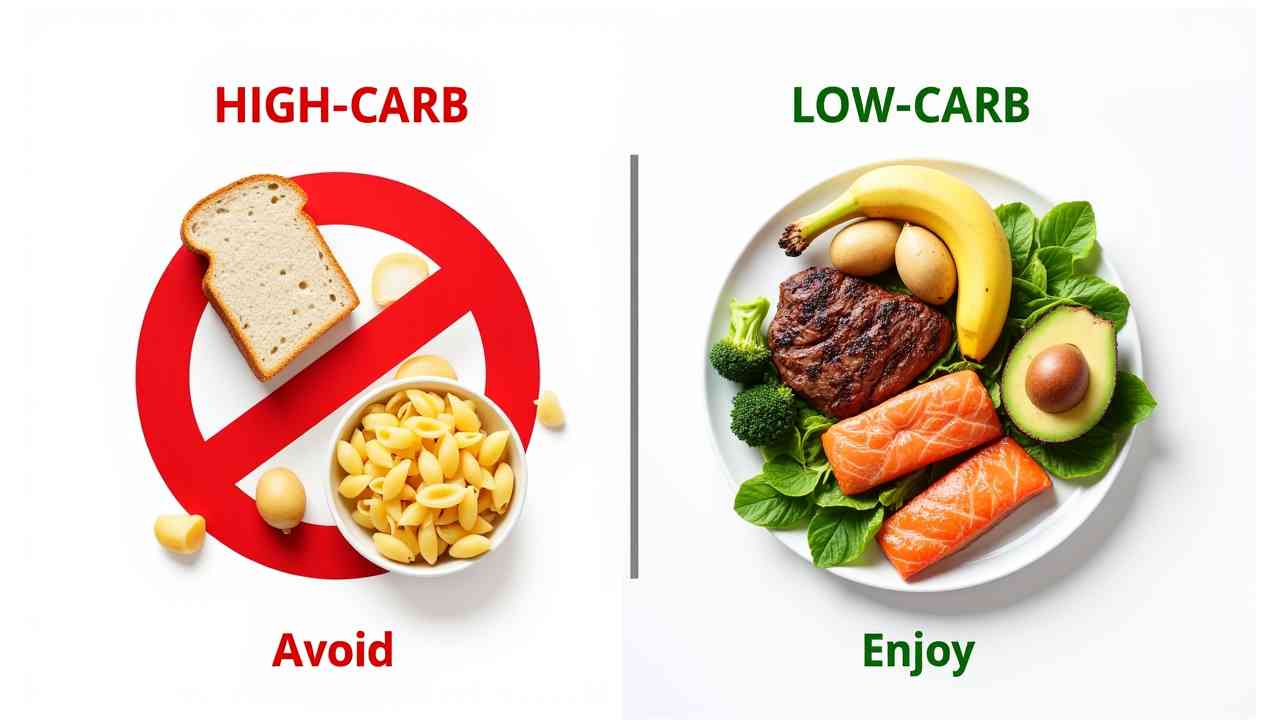
🥑 A Beginner's Guide to the Low-Carb Diet (Diet Karbo Explained)
🥑 A Beginner's Guide to the Low-Carb Diet ('Diet Karbo' Explained) 🥑
The low-carbohydrate diet, often referred to as a "diet karbo" in some regions, is one of the most popular and effective eating plans for weight loss. It is a simple but powerful approach that involves drastically reducing your intake of carbohydrates and replacing them with protein and healthy fats. This shift can have a profound effect on your body's metabolism.
This is not a diet of starvation. It is about choosing different types of foods that keep you feeling full and satisfied. This guide will explain the basics of this popular lifestyle. We will provide a clear food list to make it easy to start. Let's explore the world of low-carb eating. ✅
Disclaimer: A low-carb diet is a significant dietary change. It is always a good idea to consult with a doctor or a registered dietitian before starting to ensure it is a safe and healthy choice for you.
🤔 What is the Science Behind a Low-Carb Diet?
The science is based on how your body uses fuel. When you eat carbohydrates, your body converts them into glucose (sugar) for energy. This causes your pancreas to release insulin, a hormone that helps shuttle glucose into your cells. Insulin is also a fat-storage hormone.
By drastically reducing your carbohydrate intake, you lower your insulin levels. This encourages your body to switch its primary fuel source. Instead of burning glucose, it starts burning its own stored fat for energy. This metabolic state, when very low in carbs, is known as ketosis.
🚫 What Foods Must You Avoid?
This is the most important part of a low-carb diet. You must strictly limit or avoid foods that are high in sugar and starch. This means you will need to become a careful label reader. The main foods to avoid are:
- Sugars: All forms of sugar, including soda, candy, desserts, and fruit juice.
- Grains: All wheat, rice, pasta, bread, cereal, and oats.
- Starchy Vegetables: Potatoes, sweet potatoes, corn, and peas.
- Most Fruits: Fruits are high in natural sugar. Bananas, grapes, and mangoes are particularly high. (Small amounts of berries are usually okay).
- Legumes: Beans and lentils are generally too high in carbs for a strict low-carb diet.
✅ What Foods Can You Eat?
Your plate will be full of delicious, satisfying, and nutrient-dense whole foods. You will focus on building your meals around these amazing ingredients.
- Meat & Poultry: All types are welcome, including beef, chicken, lamb, and pork.
- Fish: All fish is good, especially fatty fish like salmon, which is rich in omega-3s.
- Eggs: A perfect, versatile, and affordable low-carb staple.
- Non-Starchy Vegetables: This is a huge category! Fill your plate with leafy greens, broccoli, cauliflower, zucchini, bell peppers, and asparagus.
- Healthy Fats: Avocado, olive oil, butter, and coconut oil are your primary sources of fat.
- Dairy: Full-fat cheese, heavy cream, and plain Greek yogurt are all great choices.
- What Are the Benefits and Potential Side Effects?
The primary benefit of a low-carb diet is effective weight loss. The high protein and fat content keeps you feeling very full, which naturally reduces your overall calorie intake. It can also be very beneficial for improving blood sugar control.
The main side effect is the "keto flu" or "low-carb flu" during the first week. As your body adapts, you may experience headaches, fatigue, and irritability. Drinking plenty of water and adding extra electrolytes (salt) to your diet can help to manage these symptoms.
The cool autumn season is a perfect time to enjoy hearty, warming low-carb meals. Think of a delicious beef stew (without potatoes) or roasted chicken with a side of cauliflower mash. It is a satisfying way to eat. 💪